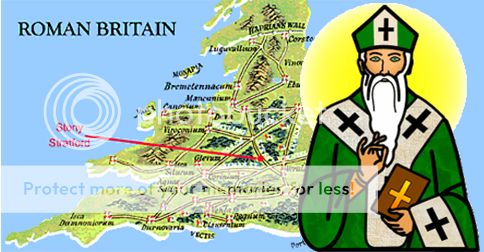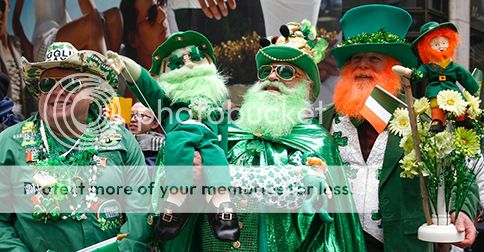As a child, I remember celebrating March 17th in a few fun ways. I’d wear my green crayon down to a stub on festive coloring books, cut out clovers from green construction paper, and if I was lucky, slurp a couple bowls of that toasted oats and marshmallow cereal – you know the one. As I grew older, I abandoned coloring books and green crayons, and the only thing I was slurping down was green beer. However, between the pots of gold, leprechauns, and rainbows, I never fully understood the history behind the day. Instead, I was content in my ignorance and let myself be ensorcelled by the magic of it all.
However, as sites like paddynotpatty.com point out, ignorance isn’t always bliss. Irish heritage is something in which millions take pride; something that many of us may be unwittingly trampling all over. In order to clear up any ambiguity, allow me to offer 5 facts about St. Patrick’s Day of which you might not have been aware. (I sure wasn’t)

1. St. Patrick was not born in Ireland.
It may be shocking to find out that St. Patrick was not actually born in Ireland, but Roman Britain in the fourth century. His early years were spent living under the roof of his wealthy father, a deacon of the Christian church. However, when he was merely 16 years old, he was kidnapped by Irish raiders and taken to Gaelic Ireland, where he would spend six years against his will working as a shepherd. It was during this time he “found God”, escaped from, and later returned to Ireland to convert Pagans to Christianity.

2. There aren’t now, nor were there ever snakes in Ireland.
Although the popular myth recounting St. Patrick’s heroic exile of all snakes from Ireland may be a great bedtime story to tell the wee lasses and lads, it simply isn’t true – at least not when taken literally. Currently, no species of snake inhabits the Emerald Isle, but research by National Geographic indicates that it was in fact the Ice Age, not St. Patrick, that’s responsible for Ireland’s snake-less nature. The “snakes” may be interpreted in a more metaphorical sense referring to St. Patrick converting Pagans to Christianity.

3. It’s a 3-leaved clover, not 4!
To help him explain the Christian Holy Trinity to the Pagans, St. Patrick used the three leaves of a clover to represent the Father, Son, and Holy Spirit of the Christian religion. Although it is considered lucky if you stumble upon a clover with 4 leaves, as they are fairly uncommon, it has nothing to do with St. Patrick.

4. Wait, why are we wearing green?
Great question. Like I mentioned earlier, I’ve always personally just associated the color green with St. Patrick’s Day and never really considered the meaning behind it. The whole idea that “Green=St. Patrick’s Day” has been ingrained in my mind since youth, and I imagine it’s the same with a lot of other folks as well. Sure, the shamrock’s association to this day might certainly be a reason behind the green-washing, though it goes a bit deeper. Initially, the color first adopted by holiday patrons was “St. Patrick’s blue”, a light, almost pastel color. It wasn’t until the late 18th century that green was adopted by the United Irishmen, a republican organization launched in rebellion against the 1798 British Rule. Ever since, the color green has been associated with Irish nationalism.

5. Alcohol was forbidden!
It might come as quite a shock, but until 1970, when it was officially recognized as a national holiday in Ireland, there wasn’t a single pub open on St. Patrick’s Day! This civic sobriety is a far cry from today, in which an estimated $245 million dollars is spent in bars worldwide on just beer alone. This doesn’t even take into account shots of liquor, tips for the bartender, or orders of corned beef and cabbage.

6. This year will celebrate the 253rd Annual NYC St Patrick’s Day Parade
One of the world’s largest, the New York City St. Patrick’s Day parade is still celebrated in much the same way it was back in 1763 – no floats, automobiles, or any modern accommodations are permitted. Hundreds of thousands people march up Fifth avenue the same way the colonists did: on foot!
Hopefully this helped to not only teach you a bit about the history of St. Patrick’s Day, but also get you pumped for this weekend’s festivities! In case I don’t see ya, happy St. Patrick’s Day! Erin go Bragh!